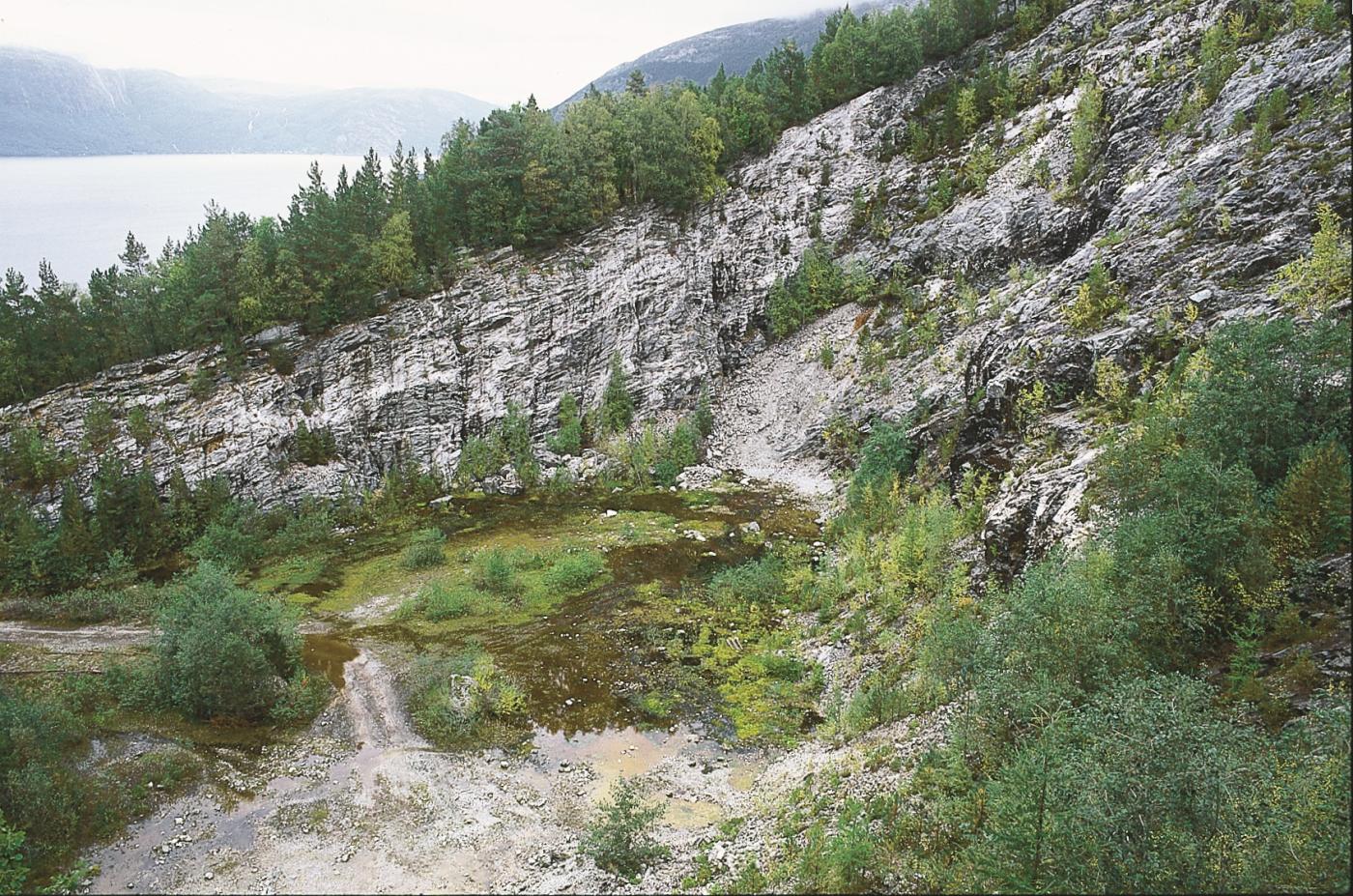Ullensvang has quartzite in enormous amounts. The rocktype, a transformed sandstone, belongs to the so-called Ullensvang Group, and is perhaps as much as one and a half billion years old. Despite its age, it has visible structures from the time the sand was deposited by rivers and lakes in an ancient volcanic landscape. However, the original quartzite is not pure enough for the ferro-silicate industry: mica, feldspar and other minerals got mixed in with the quartz grains in the ancient river. But, in more recent geological periods, some of the quartz was dissolved and deposited as veins in the bedrock. This pure, white vein-quartz is seen, among other places, in the mountainside above Kvalvikane. Ålvik inhabitants came here to collect quartz for their melting furnaces. The old access road from Indre Kvalvikane up to the mountains is completely white from the small quartz stones from the quarry further up. Today, the requirements for purity are too strict for the quartz from this area to be used, but perhaps there is purer quartz from an area that has yet to be discovered?
The quartz quarry in the mountainside above Kvalvikane
The quartz quarry in the mountainside above Kvalvikane - once the source of raw materials for the melting furnaces in Ålvik. Activity in the quarry ceased around 1960. (Svein Nord)
Kvalvikane
QUARTZITE AND QUARTZ
In Ålvik quartz has long been used to produce ferro-silicon. The quartz was collected from the other side of the fjord, from the mountainside above Kvalvikane.
Denne kvartsitten frå vegskjeringane mellom Velure og Aga viser såkalla skråsjikt. Under avsetjinga la nokre lag seg flatt, medan andre la seg på skrå (skråsjikt). Slik lagning finst òg i dagens elveavsetjingar i Hordaland. Rett nok er dei halvannan milliard år gamle bergartane snudde og vridde på, men ikkje meir enn at ein geolog framleis kan tolka kva retning som var opp då dei vart danna.

